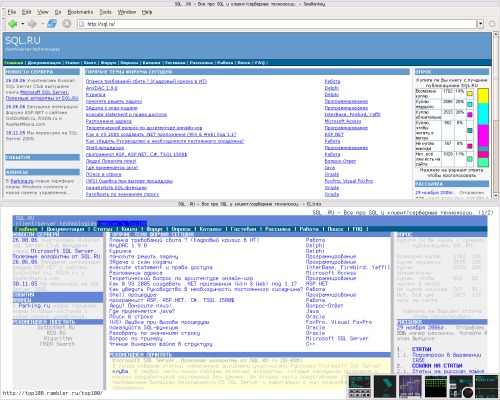

5 In a study of women in rural Canada, most reported that for online health information, they relied on keyword searches performed in popular search engines rather than going directly to medical sites. According to The Social Life of Health Information, 2011, 65% of females look online for health information. Women also obtain health information from the Internet. 4 These studies indicate that teens' or women's magazines might not be the best sources of health information for females. 3 A study in England reviewed the complementary and alternative medicine (CAM) information in fifteen publications and found that out of 150 articles on CAM therapies, 131 were written by contributors with no medical qualifications. Of the 236 articles reviewed, none were found to give advice contrary to the AHA guidelines however, some received low ratings for their lack of specificity. 2 Another United States study examined cardiovascular health information in four magazines largely read by young women (ages 18-34) for consistency with American Heart Association (AHA) guidelines. The study also showed that while the magazines sometimes cited studies in their health-related articles, they often did not provide the names of those studies or information about where they were published. However, when the authors analyzed information requests of women at the University of Michigan's Women's Health Resource Center, they found that the topics of their requests more closely matched the women's health information presented in two major medical journals than the topics presented in these two women's magazines. Weight loss was the most common health-related topic followed by fitness, healthy eating, children's health, and hormone replacement therapy. Moyer published a study in 2001 analyzing health-related information in two widely-circulated women's magazines. Many women get health advice from popular media such as consumer magazines targeted to female readers. The quality of this information is uneven and the audience for it, even among an educated population, does not necessarily have the knowledge or skills to assess it. Women obtain health information through various media, such as magazines, books, television and the Internet as well as through other people-health professionals, acquaintances and family members. Thus, the target population and setting for this particular project were new to the library staff.
#Elinks texas health org free
The library has worked with the underserved at free clinics, with senior citizens in retirement communities, with health care providers in rural hospitals, and with children at public libraries, but had no previous experience with a solely female population or a setting such as a fitness center. The decision to partner with a women's fitness center was based on two factors: 1) the belief that women in an exercise program would be likely to have an interest in reliable health information and 2) the imminent launch of the library's new “Women's Health” page at its consumer health information site, healthelinks (). The site selected was Curves North Bossier, a local center that is part of Curves International, Inc., the “largest fitness franchise in the world.” 1 The sponsoring agency was the National Network of Libraries of Medicine, South Central Region (NN/LM SCR). In 2010, an application for a similar type of outreach project was submitted to fund placement of a computer in a women's fitness center.

The Louisiana State University Health Sciences Center – Shreveport (LSUHSC-S) Medical Library has a rich outreach history of obtaining financial awards to place computers in different venues and then training users to find reliable consumer health information on those computers.


 0 kommentar(er)
0 kommentar(er)
